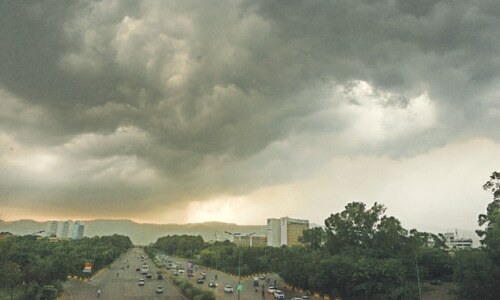“We were too tired to help. Above 8,000 metres is not a place where people can afford morality,” wrote Jon Krakauer in ‘Into Thin Air: A personal account of the Mt Everest Disaster’. Krakauer’s book centres on his climb to the world’s highest mountain, Mount Everest, when the 1996 disaster took place in which eight climbers died. It highlights the competition between rival guiding outfits as well as the ego clashes at high altitudes, where a wrong move means death.
In 2008, K2 claimed the lives of eleven mountaineers including two Pakistanis. Called the worst single accident in the history of K2 mountaineering, it offered a glimpse into the ferociousness of the mighty Karakorams.
Pakistan is home to five of the fourteen 8000m plus peaks in the region (comprised of Pakistan, Nepal, India and China), including K2, Nanga Parbat, Broad Peak and Gasherbrum I and II. Though climbing Everest remains the ultimate dream for most climbers, more often than not, it’s K2 that tests a ‘true mountaineer’.
In his book, ‘K2: Life and Death on the World's Most Dangerous Mountain’, Ed Viesturs wrote, “K2 is not some malevolent being lurking there above the Baltoro, waiting to get us. It's just there. It's indifferent. It's an inanimate mountain made of rock, ice, and snow. The "savageness" is what we project onto it, as if we blame the peak for our own misadventures on it.”
This ‘savageness’ which Viesturs, an accomplished mountaineer, mentions, is what sets the mighty Himalayas and Karakorams apart from the Andes or the Alps. Twice the size of The Eiger (3,970 metres), the mountains in this region present an unmatched challenge fraught with difficulties.
Ominous Year
2013 proved to be a tumultuous year for mountaineers and Pakistan, with the Nanga Parbat massacre in June making headlines for all the wrong reasons. The merciless killing of ten people including trekkers and climbers of foreign nationalities and a Pakistani cook was a major shock.
But what happened in July and August is more to be blamed on nature.
So far this year, 16 climbers have been presumed dead on high altitudes, especially on Gasherbrum I (G-I), an 8068m peak. In this grim scenario, the search and rescue operations for climbers and trekkers remain crucial.
First it was the tragic death of Polish mountaineer Artur Hajzer on G-I in a freak accident. The veteran mountaineer died after sustaining a fall in the Japanese Coloir. Then it was the news of Iranians Aidin Bozorgi, Pouya Keivan, and Mojtaba Jarahi, all in their 20s, who went missing after a successful ascent of Broad Peak.
This was followed by the news of Spainiards XeviGomez, Abel Alonso, Álvaro Paredes and Alfredo Garcia who went missing after summiting G-I. Only Garcia was able to make it down and on Friday, the rescue operation to search for the missing trio was called off.
Towards the end of the month, the Kiwi father-and-son duo of Marty Schmidt and Denali Schmidt perished after being hit by an avalanche on K2.
Similarly in August, Czech Mountaineering Federation head Zdenek Hruby died on his way down from G-I.
Rescue Operations
“At over 7,000 metres, it’s a miracle if one survives in a blizzard or an avalanche, with little food or gas while waiting to be found by a rescue team,” said Haji Rozi Ali on a cool evening at Concordia (near Baltoro Glacier, Pakistan) in early July.
“On a mountain, things can go awry in minutes and an ordinary person may not be able to grasp these changes,” he said while sipping green tea.
Haji sahib, as he is often referred to, is the team leader for the ‘Concordia Rescue Team’, an initiative coordinated by the Italian EvK2Cnr Committee and the Karakoram International University with support from the Government of Pakistan and the Alpine Club of Pakistan (ACP).
The rescue team, with a fully equipped dispensary and necessary safety gear in addition to a satellite phone and solar charger, provides rescue and medical assistance to trekkers and climbers.
“We have carried out search and rescue operations for climbers on foot and assist in helicopter rescue, but all the help will reach a person in distress only if we get information in time,” he said.
“It was the 2008 disaster on K2 that highlighted the need for altitude rescue services in Pakistan,” said Karrar Haidri, the ACP spokesperson.
In the 2008 tragedy, 11 climbers including two Pakistani high altitude porters Jehan Baig and Mehrban Karim lost their lives. Yet another tragedy took place in 2012 when Nisar Hussain Sadpara, a high altitude porter and one of the most promising climbers from Pakistan, went missing on G-I along with the expedition leader Austrian Gerfried Göschl and Swiss Cedric Hahlen.
The rescue team came into being in 2012, in the wake of the Gayari incident when Pakistan army lost over 140 soldiers and civilians after an avalanche wreaked havoc.
Communication Issues
So what is the one thing that costs trapped climbers the most?
When this question was posed to Haidri, he said: “It is communication, or the lack of it, that can make or break a rescue operation.”
He went on to explain that at high altitudes and remote locations, the elements are already against the climbers and any delay in reaching out for safety can cost them their lives.
The ACP allows for the necessary coordination between Askari Aviation that carries out helicopter searches, high altitude porter teams and expeditions.
“But not all expeditions are forthcoming. Some try to cut down on costs by not paying the refundable $10,000 that is required for carrying out helicopter searches. Then, in case disaster strikes, the expeditions prefer sending their climbers for rescue first, and only when they cannot manage, they send out a distress call. At times, it’s too late by then,” Haidri summed up.
Unlike Nepal, where the tourism industry is regulated and the guiding teams ensure maximum safety of climbers, things in Pakistan are still shaping up. The Alpine Club, with its meager resources, makes an active effort to coordinate with foreign teams.
While the foreign expeditions do make arrangements to ensure maximum safety, local trekking groups (especially those with unregistered tour guides) do not follow any safety rules.
Unregistered tour companies, mostly operating from Lahore, have known to put the limbs and lives of climbers at risk and even gone to the extent of harassing injured climbers to refrain from filing complaints with the APC.
“Climbers are a different breed. They are well aware of the risks they are taking and very often will reply to the criticism about their extreme adventures by saying ‘we’ll go down doing what we love the most’. But even then, safety comes first,” said Haji sahib.
For all who wonder why climbers indulge in dangerous pursuits when they know the risks, here are a few lines from a conversation with a missing climber's relative.
“By climbing Gasherbrum-I, he achieved his goal. He always said that if he suffered something bad at the mountain and died, people should leave his body resting at the mountain forever. We know how a mountain works. It always keeps the best man. So there he is, resting among his beloved mountains.”












































